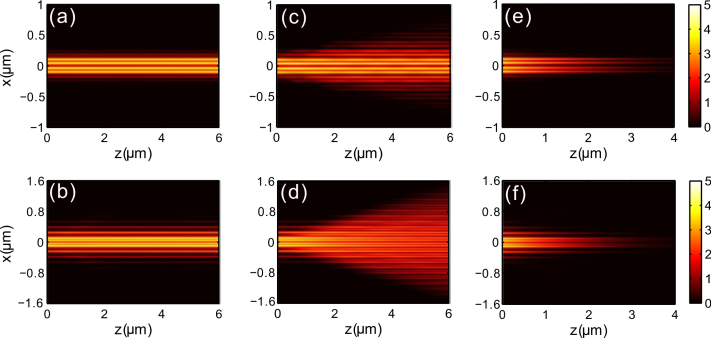Optical spatial solitons, the stationary propagation of light beam with a constant transverse profile, are formed as the diffraction and nonlinear effects reach a balance in a nonlinear optical system. The vector solitons have at least two mutually influenced components with both being conventional spatial solitons.The vector solitons have attracted much attention for potential applications in developing light-control-light techniques.Ones have investigated the vector solitonsby usingdielectricandmetallic waveguide arrays,where the light diffraction can be flexibly engineered. Furthermore, the solitons inmetallic waveguide arrayspossess significantly small lateral size as they are formed by surface plasmon polaritons (SPPs) which are strongly concentrated on metal surfaces.At the same time, the nonlinearity can be readily excited at relatively low input power. Graphene is a novel 2D material and manifests self-focusing nonlinearity. Surface plasmon polaritons on graphene exhibit stronger confinement. Therefore, the graphene sheet arrays could provide a platform for researching novel nonlinear optical phenomena.
Prof. Peixiang Lu, Prof. Bing Wang and PhD student Zhouqing Wang et al. from the ultrafast optics group have simulated the vector plasmonic lattice solitons in nonlinear graphene sheet arrays andcarried outdetailedanalysisaboutthe vector solitons. A graphene pair consisting of two separated parallel graphene sheets can support symmetric and antisymmetric propagating SPP modes. Consequently, there should be two dispersion bands for the graphene-pair arrays. The vector PLSs are composed of two components belonging to different bands with different frequencies, which makes the two beams incoherent. The stationary propagation of vector PLSs is obtained by achieving the balance between the self-focusing nonlinearity of graphene and SPP diffraction.Thanks to the strong confinement of SPPs, the vectorplasmonic lattice solitonscan be squeezed into a lateral width of ~λ/100. Moreover, the transverse size of the vector solitons can be flexibly modulated by tuning the chemical potential of graphene. The study will provide a promising approach to all-optical control on deep-subwavelength scale.
This work “Vector plasmonic lattice solitons in nonlinear graphene-pair arrays” has been published inOptics Letters (Vol.41.Issue.15.pp.3619-3622.2016).This work is supported by National Natural Science Foundation of China (NSFC) (11304108); Specialized Research Fund for the Doctoral Program of Higher Education of China (20130142120091); Natural Science Foundation of Hubei Province (2015CFA040).

Fig.(a), (b) Thestable propagation of the first component and the second component without loss. (c), (d) The single propagation of the first component and the second component when the other one is removed. (e), (f) The stable propagation of the first component and thesecondcomponent in lossy GPAs. The field distribution is shown by log(|E|2) in all figures.